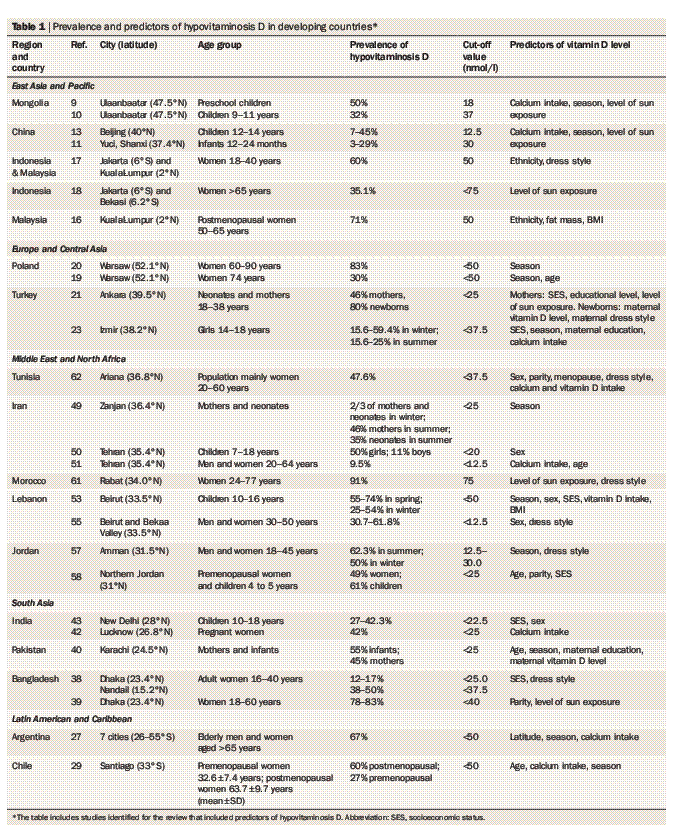Low D in developing countries – less than 5 ng in some children in China
Hypovitaminosis D in developing countries—prevalence, risk factors and outcomes
Nature Reviews Endocrinology 6, 550-561 (October 2010) | doi:10.1038/nrendo.2010.146
Asma Arabi, Rola El Rassi & Ghada El-Hajj Fuleihan
Hypovitaminosis D is a prevalent disorder in developing countries. Clinical manifestations of hypovitaminosis D include musculoskeletal disorders, such as nonspecific muscle pain, poor muscle strength and low BMD, as well as nonmusculoskeletal disorders, such as an increased risk of respiratory infections, diabetes mellitus and possibly cardiovascular diseases. In developing countries, the prevalence of hypovitaminosis D varies widely by and within regions; prevalence ranges between 30–90%, according to the cut-off value used within specific regions, and is independent of latitude.
A high prevalence of the disorder exists in China and Mongolia, especially in children, of whom up to 50%
are reported to have serum 25-hydroxyvitamin D levels <12.5 nmol/l. (= 5ng/ml)
Despite ample sunshine throughout the year, one-third to one-half of individuals living in Sub-Saharan Africa and the Middle East
have serum 25-hydroxyvitamin D levels <25 nmol/l, (10 ng/ml) according to studies published in the past decade.
Hypovitaminosis D is also prevalent in children and the elderly living in Latin America.
Risk factors for hypovitaminosis D in developing countries are similar to those reported in Western countries and include
extremes of age,
female sex,
winter season,
dark skin pigmentation,
malnutrition,
lack of sun exposure,
a covered clothing style and
obesity.
Clinical trials to assess the effect of vitamin D supplementation on classical and nonclassical clinical outcomes in developing countries are needed.
- [tiki-download_file.php?fileId=1524]

See also VitaminDWiki
Newborns in sunny Jordan have very low Vitamin D (histogram) – Nov 2013
Vitamin D deficiency for children’s bones is 14ng, based on PTH analysis – Sept 2013
Hypothesis: recent increases in flat-headed infants is due to low vitamin D – July 2013
Children low on vitamin D were 2X more likely to have diarrhea and vomiting - June 2013
75 percent of unexplained sudden infant deaths had inadequate level of vitamin D – April 2013
Mongolian women have the lowest levels of vitamin D in the world – Sept 2013
Vitamin D deficiency in Middle East and North Africa - June 2013
Beijing extremely vitamin D deficient even in the fall: 10 ng – April 2013
93% of newborns of military in Hawaii had low vitamin D – March 2013 suspect air conditioning
